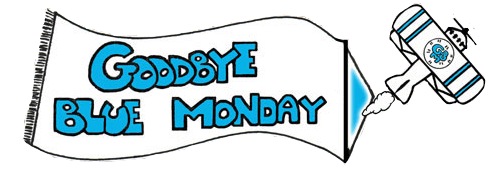[GBM] A Better CP Forecast
 •
by
•
by Paul Proteus

So it goes
So I was interested to read Gnilrap's article where he forecasted the election for ResouIa based on the opinion of the country's "most influential" players. It was an illuminating piece, although I'm not sure how convincing it was. Still, it made me think. I wondered how accurate such a forecast must be. For one, even the most influential player, theoretically, votes once, and second, a lot of the "power" described in Hadrian's article is really derived from party influence. Something that may be less instructive once party endorsements are locked in. Thus, I wondered whether it was possible to perhaps construct a more accurate forecast of the election based on more meaningful and quantifiable factors.
Warning: I put absolutely minimal work into this. Why? It's a game, and to do a thorough job would be fairly time consuming. Second, my goal is not a razor sharp forecasting model, rather it's to see if it's possible to sketch a convincing picture of eRepublik elections from basic and obvious factors. Also noteworthy: As our voter base continues to decline, and party size (and influence) changes fairly rapidly, I have restricted our sample to the past year, I think this is worthwhile but obviously it also invites a host of problems stemming from such a small sample size in an extremely idiosyncratic political sim. Furthering this difficulty is the rarity of truly competitive elections, last month for instance we really only saw one serious contender on the 5th. Again, however, our goal is merely to gain a rough idea for this election. For that reason, I have also restricted the sample to candidates who have gained support of at least one top 5 party. How instructive this analysis will be, obviously, remains to be seen.
Model Building

So pretty...so beautiful
So the first question is: what really impacts an election? There are a few easy things we can look at, party endorsements immediately come to mind. These are public and broadcast to metagamers and two clickers alike. Our sample really isn't large enough to gauge the effect of each top 5 party (in quickly running this for myself, I found that WTP have an outsized influence in this analysis, possibly this indicates they choose to support candidates who are already more likely to win than a party such as the Feds who have run multiple losing candidates in the past year, as well as a slight bump for the SFP. Ultimately this is conjecture, and unimportant beyond my decision to not include individual parties as variables). To this end, I have also included total endorsements from t5 party's as a variable. This is a simple way to gauge the influence of endorsements as a whole while avoiding the more difficult specific factors of each election. The impact of popular military units such as EZC also cannot be understated, and has been a noted factor in elections since the introduction of MUs to the game. To this end, I included EZC and USAF membership as factors, however after running an initial regression I came to the conclusion that USAF was not significant and removed it from the model. I did this running an F-Test, but for simplicities sake |t| = .78
Results

Did you know anyone can order lab coats on the internet?
So, assuming a pretty simplistic model of Votes = B0 + B1(T5 Endorsements) + B2DEZC + B3DFmrCP we find B0 = 37.52, B1 = 61.36, B2 = 59.08 B3 = 26.33. All of these results are evidently significant. Our Adjusted R2 is .9118. Now, again, I'm not really giving the necessary information for a good analysis here, because that's not this article's goal, if you want my R output, just shoot me a PM. Anyway, This indicates a fairly strong gain for candidates based on party endorsements, as well as from membership in EZC and status as a former CP.
So, Election Forecast?
Well let's see how this extremely simplistic model has worked in the past:
May:
Tyler (predicted): 248.24 actual: 228
95% CI: Lower: 184.9831 Upper: 310.8819
rainy (predicted): 98.99 actual: 129
95% CI: Lower: 41.90109 Upper: 155.8775
June:
Yui (predicted): 219.53 actual: 247
95% CI: Lower: 160.0729 Upper: 278.5767
Schubaca (predicted): 98.89 actual: 90
95% CI: Lower: 41.90109 Upper: 155.8775
Derphoof (predicted): 98.89 actual: 80
95% CI: Lower: 41.90109 Upper: 155.8775
July
Yui (predicted): 245.86 actual: 252
95% CI: Lower: 183.483 Upper: 307.8321
greeling (predicted): 37.53 actual: 82
95% CI: Lower: -25.67603 Upper: 100.7442
Alright, so that's about what we expect. Not perfect, but broad strokes correct. Doing it back even further and it at least correctly forecasts the winner each time, even in slightly more competitive races. So, now we finally get to the point, forecasting tomorrow.
drumroll please...

Derphoof in his new job as official drum roller. It's not easy losing a CP race.
August:
ResouIa (predicted): 221.91
95% CI: Lower: 153.3335 Upper: 289.866
Tyler (predicted): 186.78
95% CI: Lower: 128.9096 Upper: 244.2449
This actually points to an incredibly close election, given how wide the Confidence Intervals are. Still, if we're being forced to forecast one "winner" we also can find that there's a higher probability that our next President is ResouIa.

And now, President? ONLY MATH CAN SAY
So, just if you were curious, a more quantitative forecast also points to ResouIa as our next President. It also points to a close election, a much closer election than we've had recently. Especially given how basic this model is, and its limited sample size, this election is certainly still likely competetive.
Still, thought some people might find this interesting. And of course, I understand all of the weaknesses of this analysis (and also I withheld most of my work from this article because it's uninteresting to my goal). It will be doubly interesting to see if an analysis of Party Endorsements is as predictive as I am having it be.
Until next time,
Paul Proteus



Comments
Voted! I like this trend of election predictions!
Awesome. 😃
Nicely done Paul
Nice work, but it will be a bit closer.
I mean yeah this is pretty broad strokes. Also, even the "forecast" shows an election that's closer than anything we've had in the past 5 months. And yeah the goal of this isn't really perfect accuracy, it's more of an inquiry into whether we can easily make a decent predictive model, which I was interested in doing after reading Gnil's article.
And strange enough, the gap is even wider.
Someone just MMed and campaigned more active probably.
I mean it's going to fall into the confidence intervals so my model isn't incorrect per say, just not very precise at all. MMing seems to have mattered as well haha
There were too many numbers and words for me to understand this but I voted and endorsed it anyway because I'm sure it is quite excellent because it was written by Paul Proteus and he writes things that are quite excellent.
simple game calls for simplementing analysis.
But this is fine work.
P A U L P R O T E U S 4 P O T U S
A
U
L
P
R
O
T
E
U
S
4
P
O
T
U
S
This is a great analysis. The prime counterargument I'll give is Gnilraps winning in December despite only having one T5 endorsement. What if you included something to account for the prestige of a player? For instance I think a lot of 2-clickers will see Tyler's name and vote for him before Resoula, because Tyler is more prominent throughout eUS history.
Yeah this definitely isn't foolproof. I was trying to use "former CP" as a proxy for prestige because it's really hard to quantify it otherwise.
And gnils election definitely showcases the weaknesses of the model
I agree, but overall this is actually one of the better data models I've seen
These are reliable facts and figures.
No one could say it better. 😉
Did you just do maths?
I am known to sometimes do the maths
British WW II Spitfire I believe.
Huh?! What?!
How the hell did I get here?
"this is also a lazy browser game"
that is what you get when lazy RL people take over an internet game...
This was great stuff Paul. If I'm ever in politics I'm having you run a department. Preferably Economics.
Oh wow... this is going to be a great election.
I'm sensing a Nobel prize!!!
the dead speak